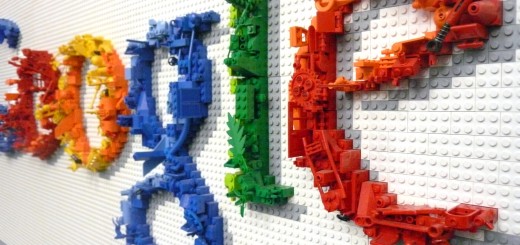‘Programmatic Poses A Great Opportunity For Publishers Who Understand Their Audience’
French start-up Adomik is scheduled to participate in a panel discussion on the evolution of the French programmatic, plus how to maximise publisher revenues using the technology at this week’s ATS Paris on (13 November). In a preview of the issues to be discussed, ATS Paris media partner Ad-Exchange.fr interviewed Adomik CEO, and co-founder, Nicolas Schueller, below is an English language translation.
AEF: You are invited to moderate within ATS Paris a roundtable discussion on the emergence of an ecosystem multiple ads in a context of changing programmatic. Can you explain in a few words this evolution?
NS: Programmatic advertising is witnessing very strong growth today, not only in terms of volume but also in terms of budget. There has also recently been a qualitative leap in the inventory sold this way.
Previously it was mostly unsold, or distressed, inventory traded on ad exchanges, but that is no longer the case today. The best example of this is with video, where we see more demand than supply on the market. Alongside this strong growth is the growing assertion of internet giants (Facebook, Google, AOL, etc) that all come with proprietary technologies; a force of unparalleled strike-power in terms of data, and new technologies with a cross-screen recognition of users.
This changes the game for everyone, the market could indeed enter a phase of polarisation around these players. These changes are a guarantee of innovation and more rapid changes, which strengthens our motivation and excitement towards the future prospects!
AEF: You talk optimisation programatic strategies, what does this mean for a publisher it means optimising inventory sale programmatic mode, especially with the rise oof agency trading deks?
NS: Today there is still a significant imbalance between buyers and sellers in terms of level of sophistication and control of programmatic. However, the optimisation margin for sellers is huge, given the volume of transactions and the granularity of segmentation criteria impressions. There is therefore a strong need for analytical plus intuitive and easy-to-use tools to integrate with ad exchanges using sellers’ optimisation tools.
This is exactly what we propose. It’s best to enable sellers to rebalance the market by taking control of their programmatic sales and offering dynamically optimal strategies.
While remaining transparent, our tools help sellers among others refine their offering, choose their sales channels as well as adjusting their pricing policy, maximising their performance in real-time.
AEF: How do media owners identify inventory sections that could for example be better valued, and how do they develop them?
NS: One of the reasons why sellers do not fully realise their potential programmatically is their lack of information about the value of their inventory and the price that buyers are willing to pay for their impressions.
By integrating marketplaces to retrieve and analyse data on all the auctions, our algorithms can detect pockets of value in the inventory of our customers, based on both market conditions, as the degree of competition and the level of bids.
Once these areas are detected our algorithms are able to determine the best way to monetise, which can happen, for example, or by setting up a price adjustment to close a deal. With this method, we can provide our customers with up to 40% more income, and seamlessly, without damaging their application ecosystem.
AEF: What is your opinion on holistic yield?
NS: Publishers and boards must deal with the proliferation of sales channels: performance, open RTB, premium direct sales, guarantees, private marketplaces (PMP).
It has become necessary to adopt an approach based on a data analysis to determine the best way to sell. Tools marketed by Adomik aim to help publishers optimise their programmatic strategy, the issue of multiple channels and sales methods is an essential dimension and was built very early in our roadmaps.
AEF: Do you think that campaigns with high added-value and creativity making use of unusual formats can only be conceived within direct sales framework, and not automated?
NS: Our algorithms are agnostic, they optimise the programmatic strategies of our clients regardless of the complexity of the size or type of device involved, and these dimensions will in no way affect our performance in terms of uplift.
Second, despite the strong trend towards automation currently observed, there is always a residual share of impressions that can not be automated, but I think it is not at all related to the added value of printing. Instead, programmatic poses a great opportunity for sellers who come to understand their customers. So there is no reason why impressions perceived as ‘value added’ by vendors should not monetised via programmatic channels.
However, it is possible that the level of creativity is indeed a barrier to automation.
AEF: What are the challenges ahead for a board or a publisher who monetises its space on an ad exchange?
NS: The strong growth of the market and its recent programmatic changes revealed two major challenges publishers governed confront today. The first is the deals / private marketplaces (PMP), which account for sellers a new opportunity to better secure income while providing their customers a fixed number of impressions, without ending up in a weak position or dependence as has been the case in the past. The second issue concerns the relationship with buyers.
Indeed, despite the automation of programmatic sales, human relationship is always a central dimension necessary to the attraction of new business and growth of business in the long term. Thus our analysis and optimisation tools enable our customers not only optimally monetise their inventory, but also to capture more budgets enriching and strengthening the relationship with buyers.
This interview first appeared on Ad-Exchange.fr



